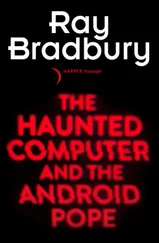Years later, sitting by the pool of his new Marin County estate—the kind where one drives in through high iron gates and follows a quarter-mile-long driveway to get to a garage— the then twenty-seven-year-old multimillionaire recently recalled that before his senior year in college he was far more interested in profit and loss statements than computer languages. He was a business major, not a computer scientist.
“At the university,” he remembered, “computers were expensive machines that a bunch of guys in white coats used behind locked doors. The computer center was a high-tech kind of place with special raised floors and air-conditioning, and hardly anybody was allowed to touch or look at whatever was in the middle of it all.”
Like many others in the microcomputer industry, Bill had been a ham radio operator in his youth. But he had been less interested in the technology behind these radios than in the communications that they provided—learning Morse code and making contact with other voices in other parts of the world. Then, in his senior year of college, he met somebody who had built a small computer from a kit. It was strictly Altair-era stuff—a wire-wrapped collection of circuit boards that had no chassis and that was hooked up to a keyboard salvaged from some ancient teletype machine. Bill was fascinated with the idea that he could actually afford to build his own computer, so he looked into it as a hobby.
It was 1976, when groups of homebrewers across the country were meeting to talk about Altairs, IMSAIs, Cromemcos and all the other esoterica associated with homemade computers. Through a local computer club, Baker met two fellows who were about to open the first computer store in Indianapolis. He was their first customer.
“I sold my ham radio station to buy my first computer kit, toward the end of 1976,” Bill remembered, eight years and tens of millions of dollars later. It was one of the first post-Altair computers—the Polymorphic 88. “The thing looked like a toaster or some other kitchen appliance,” he added. “It was a bright orange box, and the only thing on the front was an on-off switch and a reset button. I decided to get it instead of the IMSAI because the IMSAI front panel had a bunch of lights and knobs and flipper switches and looked very technical.”
In no time at all, Bill was soldering components and trying to learn something about programming from the very minimal documentation that came with the machine. When he finished his senior year, Bill’s parents asked him what he wanted as a graduation present. He remembered an ad he had seen in a hobbyist publication. “I subscribed to the only computer magazine I could find back then— Interface Age— and there was an ad for a computer show that featured a seminar in assembly language programming. I didn’t know what that meant, but I knew it had something to do with microcomputers, so I told my parents that what I really wanted was to go to that seminar.”
The seminar was held in New Jersey, and Bill took his first airplane ride to get there. In fact, it was the first airplane ride anybody in his family had ever taken. At the programming course, Bill met a fellow by the name of Lyall Morill who had also put together his own computer kit. But Lyall was quite a bit more technically knowledgeable than Bill; he was, in fact, an MIT graduate. His father had left him very wealthy, so he was just having fun with his new hobby. He had even written a little program for his own use, and Bill asked to take a look at it.
In 1977, if you wanted software for a device like the Poly 88, you created it yourself. Bill had been fooling around with programs to calculate business formulas like depreciation, or compound interest. Morill’s program, on the other hand. would be even more useful in that, unlike Bill’s own programs, it could actually keep track of the data from these calculations. It was in fact a primitive database management system, and Bill liked it so much that he talked Morill into letting him sell the program, which Bill named Whatsit? Why, if you went to a whole lot of trouble, you could use your 4 K home computer as an electronic telephone book! Just the kind of thing homebrewers would go for. The agreement Bill and Morill drew up gave the programmer royalties for each copy Bill managed to sell.
Bill’s company was already in existence when he saw Whatsit? He had set up the company when he wrote letters to different hobbyist computer manufacturers, asking for discounts on their hardware. His father had helped him name his new venture one morning at breakfast, when he asked Bill what the program did, and Bill replied that it stored a lot of information. When his father asked him how much information it could hold, Bill replied that as long as he kept buying tapes or floppy disks, the amount of information he could put into the database was unlimited. So his father suggested “Information Unlimited” as a name for the company.
The version of the program that Lyall had shown Bill needed to be improved in order to make it useful to anyone but hard-core programmers. Morill finished such improvements on Christmas Eve, 1977. It ended up as a collection of related programs for the Northstar, Sol, and other hobbyist computers. Morill then wrote up a manual to accompany the program, and Bill arranged for it to be printed. He then took the big step of flying out to San Francisco for the second West Coast Computer Faire, in the spring of 1978. The only two software publishers at that event were Information Unlimited and another outfit called Structured Systems Group. Bill’s only goal was to sell enough software to pay for his ticket home. He ended accomplishing far more than that.
“I put on my salesman hat”—Bill actually says things like that—“and shocked myself by selling over $25,000 worth of programs at that show. And that’s when I knew it was more than a hobby.” Thereafter, thousands of copies of the programs sold, to the astonishment of the programmer and the entrepreneur. Bill then started looking for other promising products.
A year later, at the third West Coast Computer Faire, the product ended up coming to him—via a crazy-looking programmer with an untamed beard, a gap-toothed grin, and piercing blue eyes. John Draper was as wild and woolly as ever, now he had a more conventional-looking (and acting)
partner—Matthew McIntosh. Together, they were trying to find a publisher for Draper’s new program, a word processor for the Apple.
The program still needed some finishing touches, but for the time being, John needed money to live on and a printer for his computer. When Adam Osborne came by their booth, John and Matthew asked him for advice. This brought them to the IUS booth, and when Bill Baker took a look at EasyWriter, he agreed to pay Draper and McIntosh an advance for it.
While Draper was finishing the program in California. Baker was in Indianapolis taking care of IUS business. But even though his company was profitable, Bill wasn’t ready to stake his future on it, and as a result, for added security, he took a job with a bank. Then the bank relocated him to San Francisco at about the time Draper completed EasyWriter. The program then started selling even better than Whatsit? It was at that time that Bill quit his job and finally took the plunge into full-time publishing.
By then, IUS was based in California. Baker’s next project, a mail-merge program for EasyWriter called EasyMailer (a means of printing mailing lists), brought him into contact with Dan Remer, another person who was to have a profound effect on his destiny as an entrepreneur. Because he thought he could save money on the EasyMailer documentation if it could be typeset directly from computer disks, Bill started looking for someone who had a typesetting machine and also knew something about computers. Dan Remer was just that person. Not only did he have a typesetting business in Berkeley, but having done a fair amount of business for microcomputer companies, he was also very knowledgeable about computers.
Читать дальше










